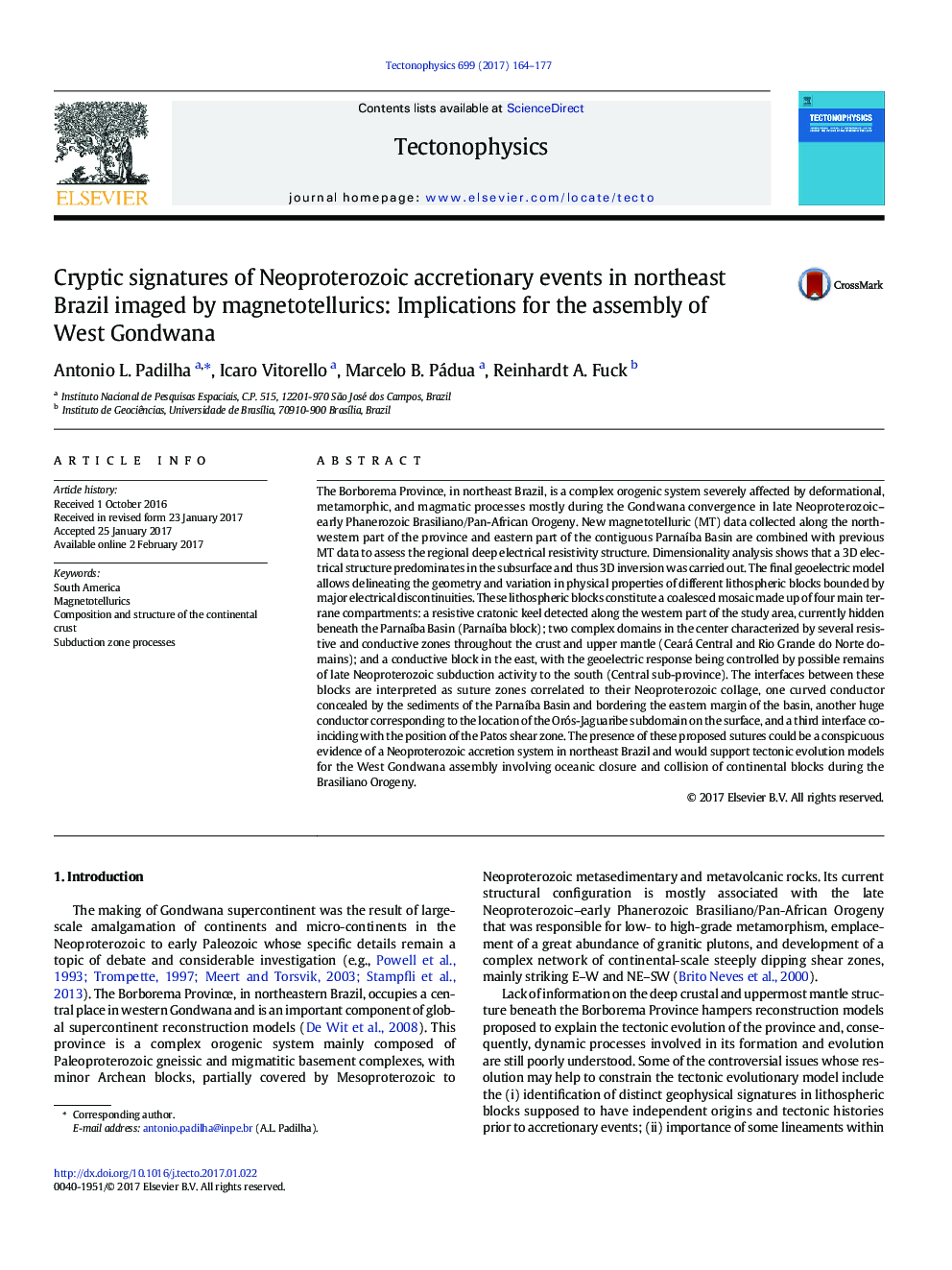| Article ID | Journal | Published Year | Pages | File Type |
|---|---|---|---|---|
| 5781745 | Tectonophysics | 2017 | 14 Pages |
â¢3D modeling of a magnetotelluric profile shows complex deep structure in NE Brazil.â¢Mosaic of resistive crustal blocks bounded by conductive suture zones is observed.â¢Interpreted as a first-order image of a Neoproterozoic Gondwana accretion system
The Borborema Province, in northeast Brazil, is a complex orogenic system severely affected by deformational, metamorphic, and magmatic processes mostly during the Gondwana convergence in late Neoproterozoic-early Phanerozoic Brasiliano/Pan-African Orogeny. New magnetotelluric (MT) data collected along the northwestern part of the province and eastern part of the contiguous ParnaÃba Basin are combined with previous MT data to assess the regional deep electrical resistivity structure. Dimensionality analysis shows that a 3D electrical structure predominates in the subsurface and thus 3D inversion was carried out. The final geoelectric model allows delineating the geometry and variation in physical properties of different lithospheric blocks bounded by major electrical discontinuities. These lithospheric blocks constitute a coalesced mosaic made up of four main terrane compartments: a resistive cratonic keel detected along the western part of the study area, currently hidden beneath the ParnaÃba Basin (ParnaÃba block); two complex domains in the center characterized by several resistive and conductive zones throughout the crust and upper mantle (Ceará Central and Rio Grande do Norte domains); and a conductive block in the east, with the geoelectric response being controlled by possible remains of late Neoproterozoic subduction activity to the south (Central sub-province). The interfaces between these blocks are interpreted as suture zones correlated to their Neoproterozoic collage, one curved conductor concealed by the sediments of the ParnaÃba Basin and bordering the eastern margin of the basin, another huge conductor corresponding to the location of the Orós-Jaguaribe subdomain on the surface, and a third interface coinciding with the position of the Patos shear zone. The presence of these proposed sutures could be a conspicuous evidence of a Neoproterozoic accretion system in northeast Brazil and would support tectonic evolution models for the West Gondwana assembly involving oceanic closure and collision of continental blocks during the Brasiliano Orogeny.
